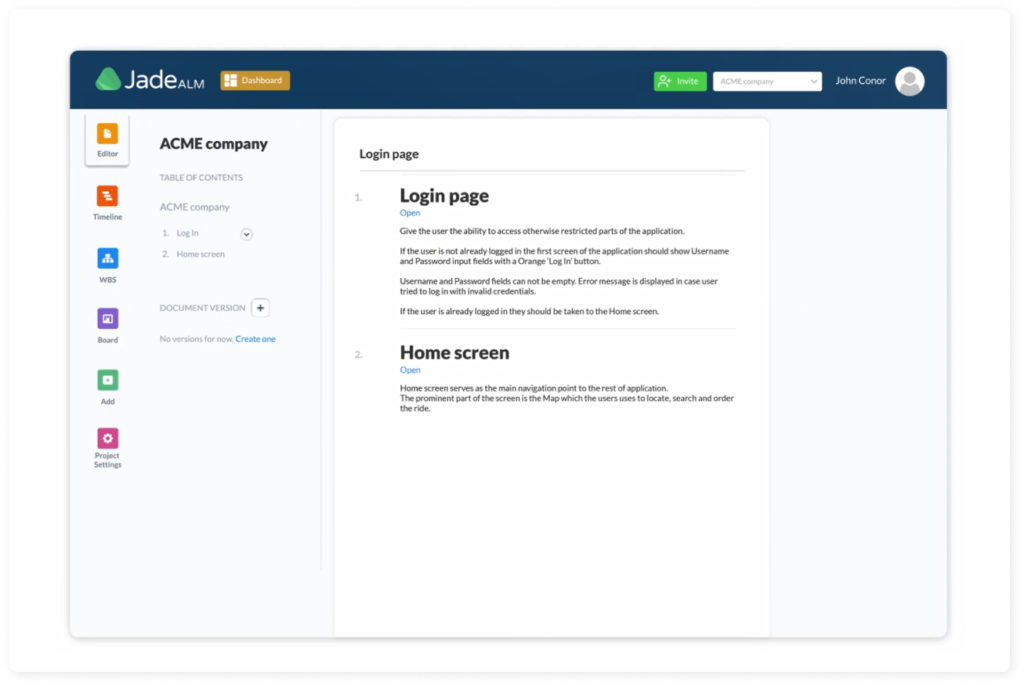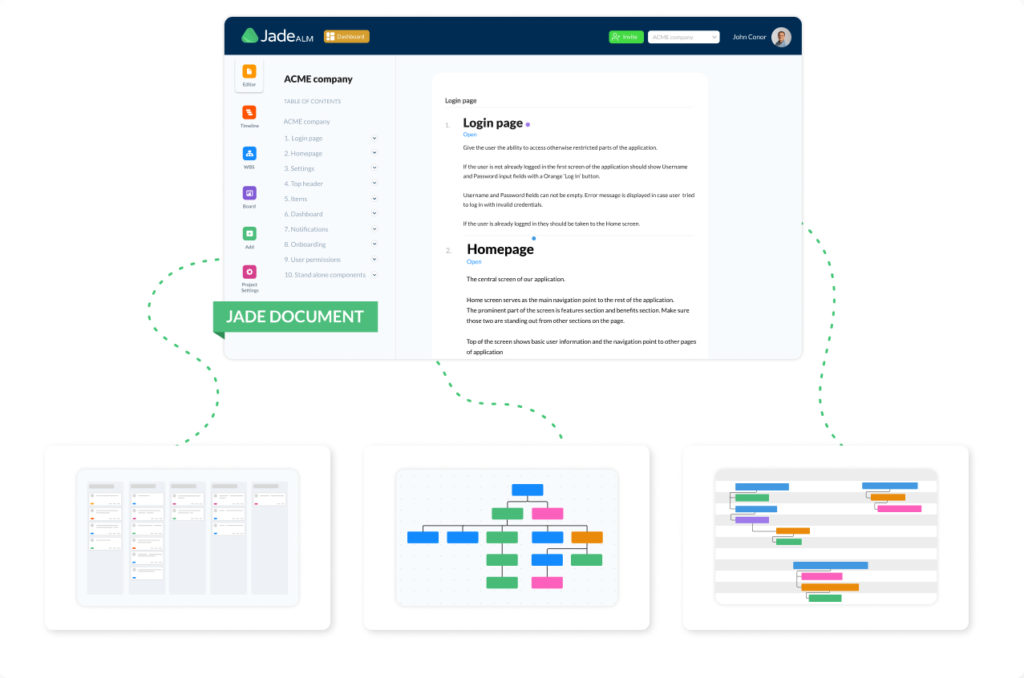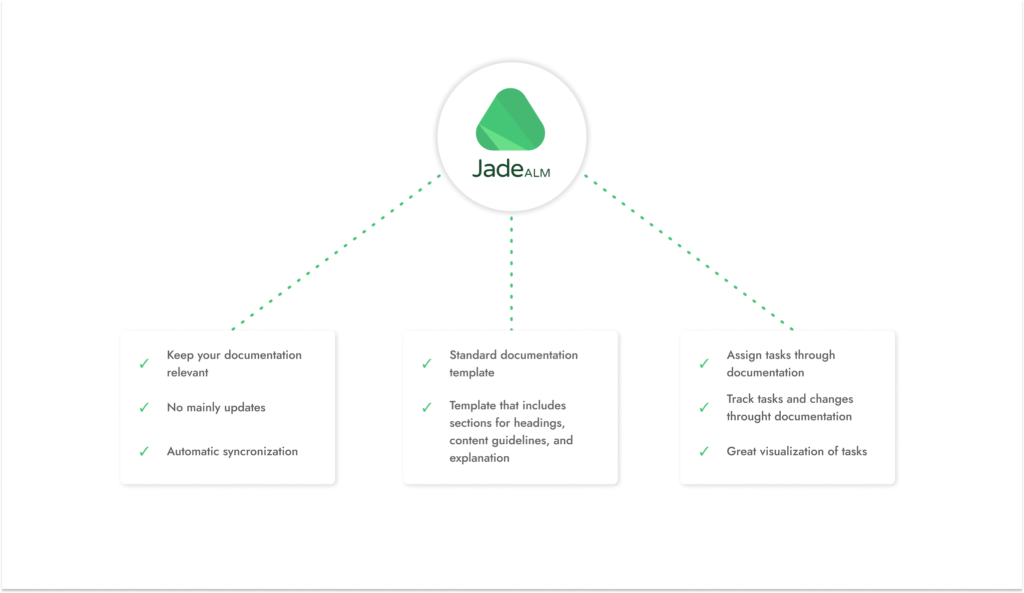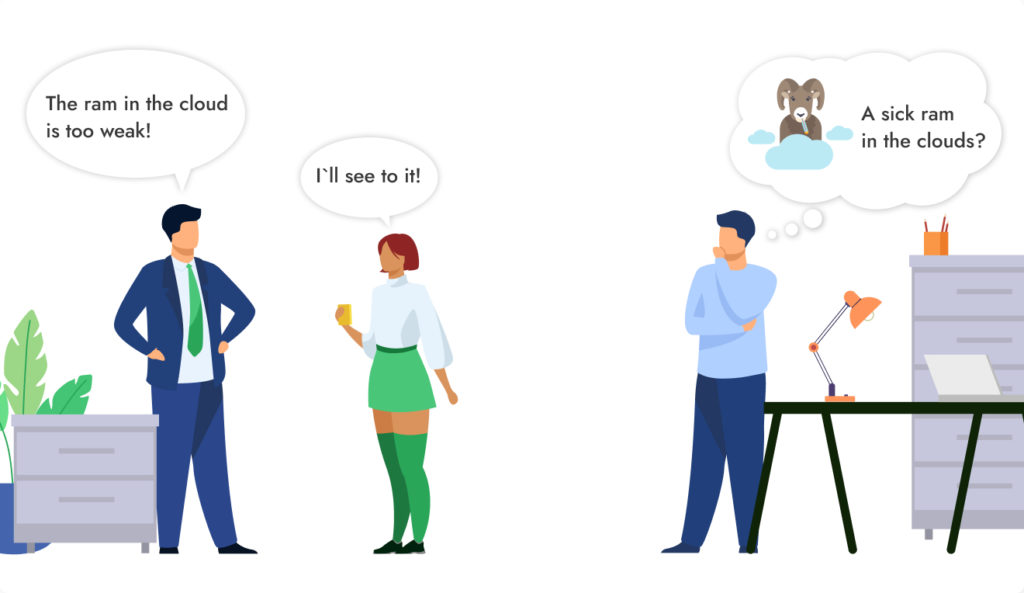Requirements Documentation Bad Habits

Requirements documentation bad habits are something that we all have – no matter what we do. However, if we don’t want to end up in that 48% of projects that failed because of poorly documented requirements, we should check our documentation habits.
Not just in the beginning, but well-written requirements are equally important in all project phases.
We listed 10 bad habits of project requirements. How many of them are you guilty of?
Insufficient preparation for requirements documentation
The first requirements documentation bad habits that we are going to list is insufficient preparation. Many fail in collecting and writing documentation because it seems obvious. Even though writing documentation looks intuitive, it is important to prepare. One of the ways to be ready is to research previous similar projects.
How to prepare for requirements documentation?
To prepare for documenting requirements you can go through the documentation of previous projects and check which of them could be useful for your current project. Based on past results, you can decide how successful particular requirements are.
The first thing after the research is to define the user for the current project. A project user is a person who will use the product of your project. Knowing who your users are will set the basics in what direction your progress should go.
One more practice that will help is to write notes before writing an official document. Instead of immediately trying to structure the documentation, start with notes. Written notes usually trigger questions that we didn’t see coming from spoken communication. After that, read your notes and check what remained unclear.
A tool that can help you with that is JadeALM. JadeALM provides the space for writing both documents and notes. You can also add comments and assignments directly into the documentation.
Having Irrelevant Structure of Requirements Documentation
Except for the terminology standard, teams also forget to set a standard for the requirements document structure. This bad habit of requirements documentation means that team members use different document templates for the same project.
Since they don’t have a document structure, different templates are used for different tasks within the same project. To better cooperation between team members, these document structures and templates should also be the same within the whole team.
Have Requirement Documentation Structure
Most project management tools don’t provide having a documentation structure. Because of the different templates, team members are mismatched. The solution for this problem is to have it all inside of a project management tool. A tool that provides features like that is JadeALM.
JadeALM provides a way to easily create and maintain an effective Requirements Documentation Structure. It has sections for headings, content guidelines, and explanations set inside the document. Guidelines are the part of the document that provides an explanation of changes that happened in the document. After you once create a template, you can copy it to future projects.
You can try it out for free.

Not updating the documentation
Teams often mistake agile with less documentation. Further, insufficient documentation is one of the common reasons why Agile is unsustainable in 2021.
More than 48% of IT employees cited that poor documentation requirements were the reasons for their project unsuccess. What really happens here is that documentation insufficient and outdated. Team members don’t update changes in documentation or they cannot find where to update it.
Keep Your Documentation Relevant
It can be overwhelming to track changes if you don’t have a person whose job is to update it all to the tools that you use. Tracking changes and updating them in documentation is time-consuming in other PM tools. On the contrary, JadeALM has a single source of truth. That means that by updating changes in documentation, you are automatically updating them in assignments, tasks, and graphics.
This reduces the time necessary to update the documentation in multiple places and drastically reduces errors of keeping everything in sync manually.

Creating unclear vizualization
Even though good documentation seems enough, you will need to have a simple picture of the project. After you write documentation, the first thing to do is a project decomposition. Visualizing tasks and progress makes tracking the progress easier.
However, while working on important projects tasks, team members don’t find it a priority to update charts. Or they forget to do it. As a result, many parts of the project aren’t included in the visual presentation. One of the tools that automatically updates changes in the project documentation to the visual features like WBS is JadeALM.
No matter what agile methodology you use, information will still be updated both in documentation and graphics.

Writing Requirements in the Scope Section
The scope of the project defines the high level of the project. There should be highlights of the project’s part, not full functional requirements. Therefore, detail requirements can make it less visually clear. In the project, the scope writes enough to describe the high level and to see the big picture of the project.
Confuse Functional and Non-functional Requirements
We should distinguish between functional and non-functional requirements. Functional requirements are descriptions of services that the software must provide. It stands for a software system or its component, such as user stories.
On the contrary, non-functional requirements don’t specify the system functionality. They describe how the functionality is perceived by the customer. They answer the question of how some feature is working, and not what that feature is.
Different team members sometimes don’t understand when to provide specific kinds of requirements. Mixing business requirements with functional requirements happen due to unclear roles. The responsibilities of the development team and stakeholders should be defined at the beginning of the project.
Using jargon
Using jargon sometimes makes requirements more friendly. But, many people don’t have in mind that requirements are not there just for them. Instead, more people should read them and understand them. In other words, jargon won’t replace good communication or other interpersonal skills. Instead, using clear and standard language prevents confusion and misinterpretations.
One more point is that people from different departments might not understand your niche jargon. It is important to make sure that all stakeholders are able to understand the requirements. Additionally, if jargon is necessary, you can make a reference to uncommon terms so no one misunderstands anything.

Ambiguity in requirements documentation
Use limited vocabulary to avoid ambiguity. While writing requirements it is definitely not the right time to show your vocabulary range. It is not time to be poetic or use equivoque expressions. In fact, ambiguity leads to confusion, the wrong interpretation, and eventually to disagreement and delays.
A good way to reduce ambiguity and ill-definition is to standardize the language. There is a lot of terminology and expressions of the same terms. To decrease the impact of it, make a deal about what terminology your team will use. With this in mind, standardization of the language should contain sections that interpret terms used in the document.
Background statements with missing content
Some background statements are not understandable to everyone. People fail to write clearly and understandably for all the other team members. They write requirements as they understand them and it often results in missing the context, content, and missing the big picture.
It is important not to assume that all the readers know the basics of the bigger picture and backstory.
No validation of documentation
One more bad habit of requirements documentation is not to validate the documentation. Once the development team has completed the requirements document, they don’t ask for stakeholders’ review. That disables everyone going through requirements and giving their feedback and corrections.
That part of making documentation is crucial for successfully completing the project. Leaving it, you risk missing key requirements or leaving critical errors. In other words, if the team doesn’t do it in time, it can cause delays in the next project phases.
How to Simplify Validation Process
Validation of documentation requires one more step of the documentation. A stakeholder should validate it and give feedback or comments if something is wrong. Further, the process is prolonging and chances for omitting some information are higher.
To avoid losing information while validation correspondence, JadeALM enables the whole process on the same page. A single source of truth makes space for stakeholders to check, valid and comment on the documentation. Moreover, everything that they comment on or change will stay within the same document. This process cuts manual work and ensures you don’t lose any detail on the way.
Wrapping up
You or your team are the ones who should write requirements. No tool will do it instead of you. However, avoiding requirements documentation bad habits can be easier if you use tools that make this process less painful. For example, JadeALM allows you to link other documents directly to your project requirements.
Furthermore, it has a single source of truth and it automatically updates changes from your documentation to the rest of the sources of project information. Multiple options to keep the whole team on the same page enable you to keep stakeholders updated without much manual work.



